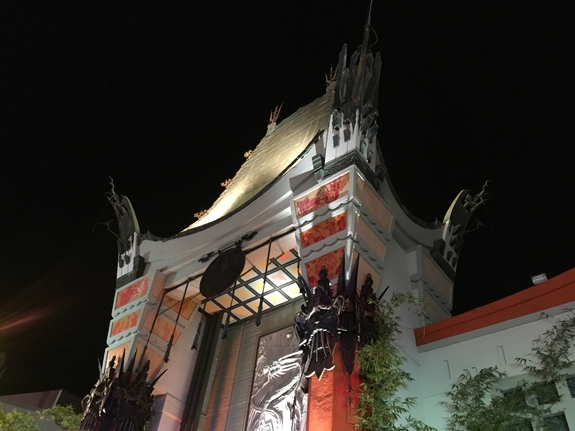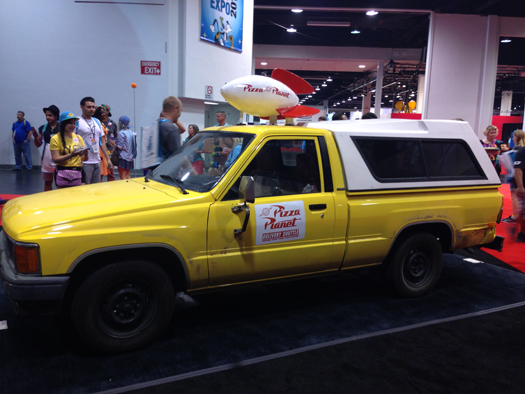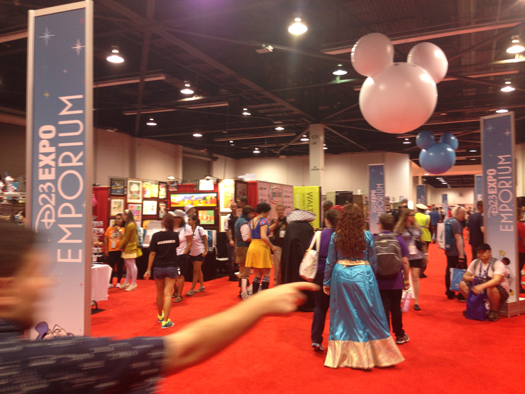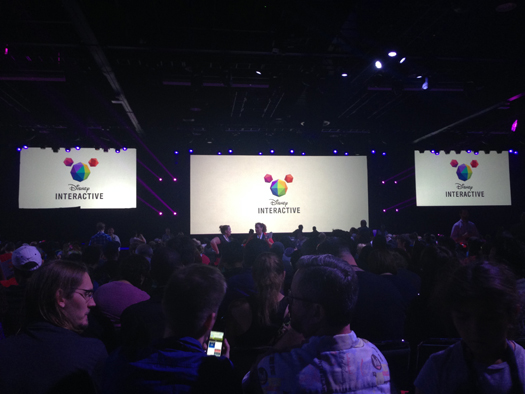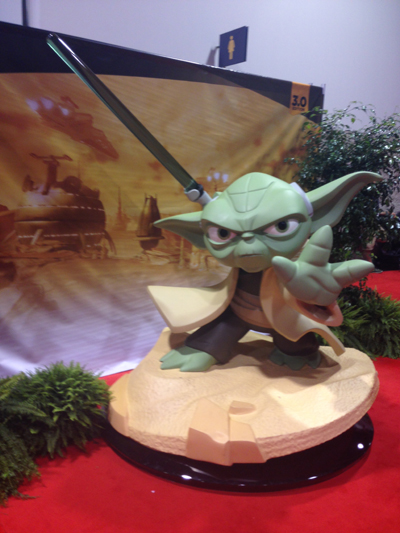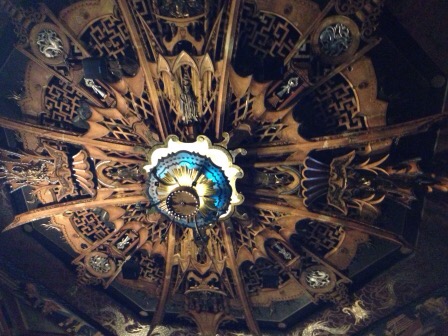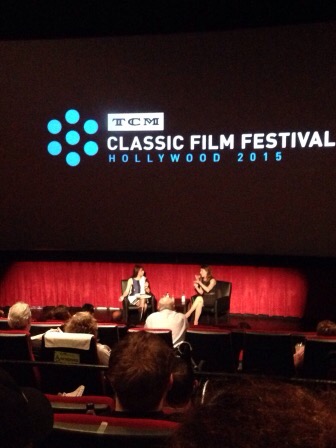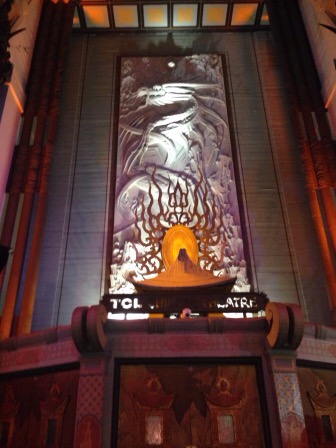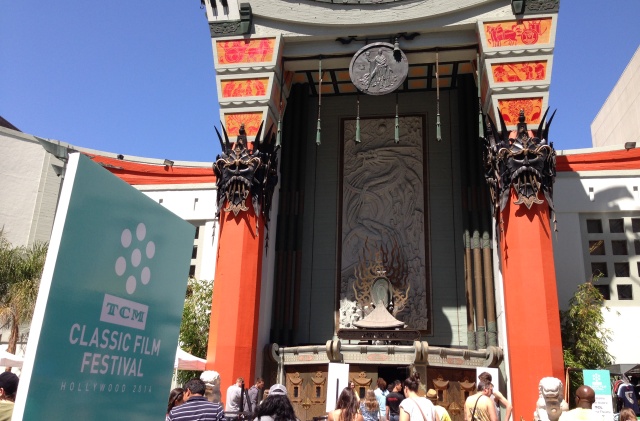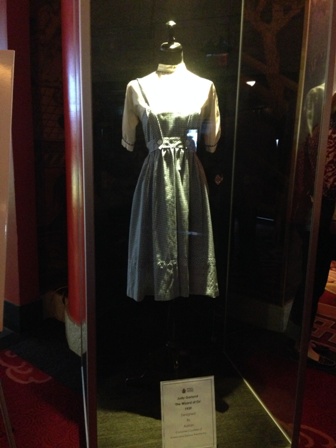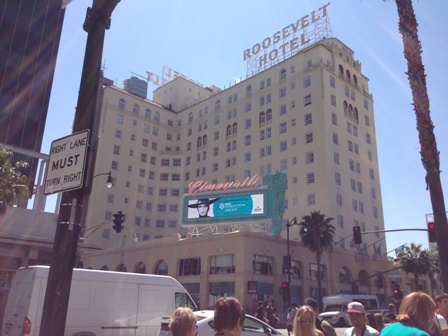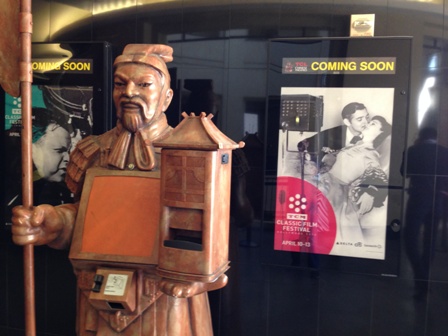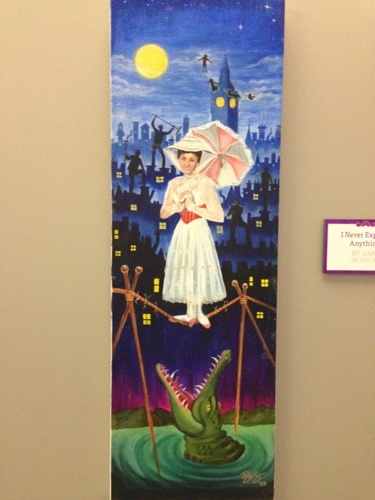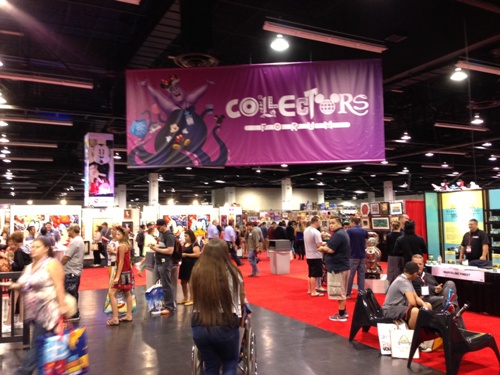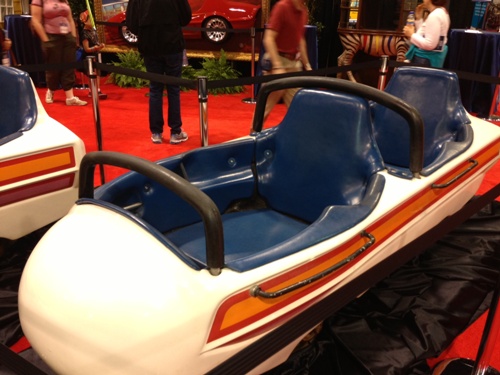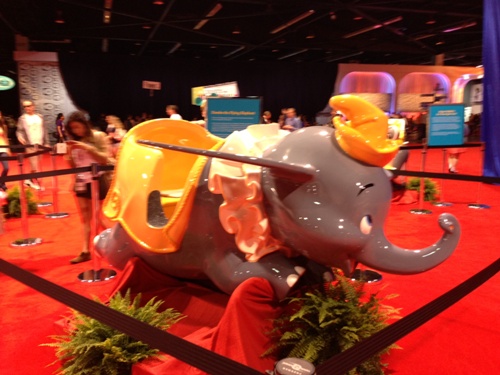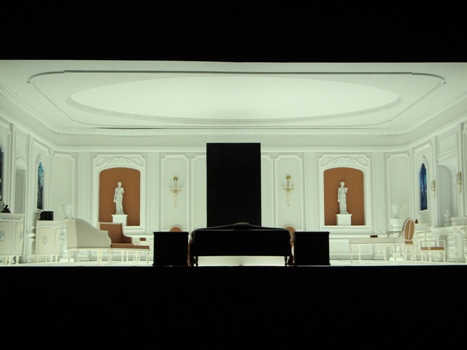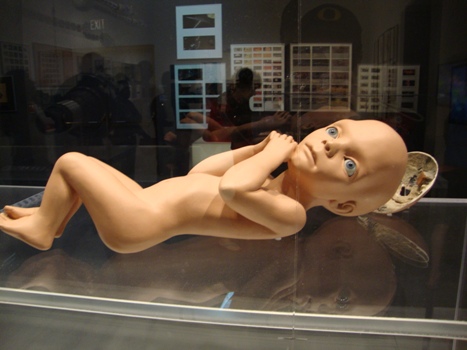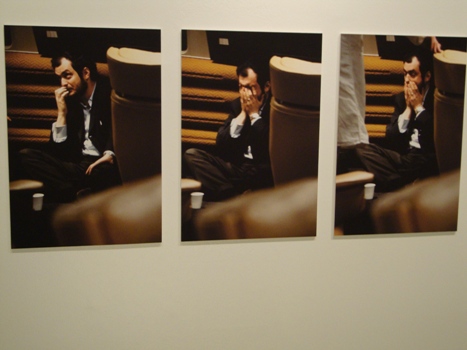
The wait is long and arduous for all of us Disney fanatics out there, but every biannual summer this magical weekend finally comes around and leaves us with a sense of wonder and amusement that makes the wait worth it in the end. Once again, I am here to document my experience at The Walt Disney Company’s extravagant D23 Expo in Anaheim, California. This is my third trip overall, dating back to the first year of this blog in 2013. I can tell you that even in just the last three Expos, this event has grown by phenomenal proportions. The 2013 Expo didn’t nearly cover the massive floor space of the Anaheim Convention Center. Now, not only does it cover most of the acreage there, but every booth seems to be crammed tighter now with barely enough space left for the growing number of guests to walk through. Certainly the acquisition of Marvel and Star Wars to the Disney family has increased the level of interest in this event. Thankfully, with two Expos already under my belt, I was better prepared now more than ever to face the challenges of this event, and check off all my must sees and dos of the list. Given how busy I was during this whole event, I unfortunately unable to give a live account like I had last time. That is why I am writing this now midweek, instead of my usual weekend post. That way, I’m giving you a more polished account rather than a rushed through retelling. In addition, instead of breaking things down day by day, I decided to account everything by the experiences, such as the panels, the show floor, the atmosphere, etc. So, let’s take a look at this year’s eventful D23 Expo experience.

THE SHOW FLOOR
On Friday morning, me and a large crowd of eager patrons made our way towards the convention center. Already, I could tell that previous years had taught Disney a thing or two about crowd management, because they managed to keep things orderly as people lined up. Those of us waiting to enter the show floor once the doors opened managed to benefit from some indoor queuing on the second and third levels of the convention center. The convention also smartly had placed security check points well near the back end of the lines, allowing us to proceed on through much quicker. By the time the doors opened, most of us were already securely inside the convention center. It took only about 40 minutes from opening for my section of the line to make it to the show floor. And once inside, the feeling of grandeur hits you. Everywhere you look, there was immediately interesting to see. Across the way was Center Stage, where various acts would perform throughout the day. To it’s right was the extremely busy Marvel booth, where much of the Expos activity centered. From there, you would be able to find several enormous booths dedicated to all sections of the Disney company; film, television, theme parks, consumer products, etc. The unfortunate thing is that some booths should have been given more space than they had. Marvel’s booth was way too small for what they needed throughout the weekend, and the vicinity around it was always jammed with traffic. Also, it’s position right next to the center stage also made noise levels a problem. Other than that, I was satisfied with the way the Expo handled queuing at this event. Lines were clearly marked throughout the show floor, and most of the booths were easy to find once you had a lay of the land. Also, it was pleasing to see a distinctively centralized position for the small vendors in the Emporium section, placed right next to the D23 Expo Arena, where some of the big shows were taking place, showing their importance to the Expo as a whole. Apart from space usage, I found this a very inviting experience on the show floor.
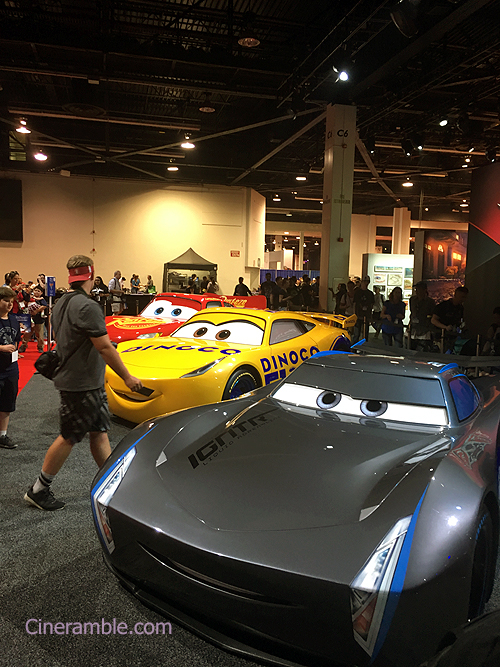

THE BOOTHS
Of course, one of the big draws of the D23 Expo is the different experiences found in all the surrounding booths. The most popular of these turned out to be the Scrooge McDuck Money Bin Dive experience, meant to promote the upcoming Duck Tales reboot on Disney’s XD television channel. It was so popular in fact, that every day required guests to stand in line just to receive a timed wrist band for re-entry later. And every single day saw an early sell-out of wrist bands, meaning that most people who visited the Expo couldn’t even experience it. I myself was left out in the cold too, so I could only observe and not participate. The booth itself was essentially a ball pit made up with plastic coins instead, but surrounding it were cameras all along an overhead canopy, which apparently can capture a 180 degree snapshot of each guests dive into the bin, which they could then share on their social media. It looked like fun, but it’s popularity also unfortunately made it very exclusive as well.

Also on the show floor was this year’s presentation from the Disney Archives. A mainstay of the D23 Expo, the Archive Exhibit is essentially a museum set-up, showcasing different artifacts found within Disney’s extensive collection. Previous years that I attended presented exhibits dedicated to the movie Mary Poppins, featuring actual props and costumes from the film, and also dedicated to Disneyland’s then 60th Anniversary, showcasing various artifacts from it’s long history. This year, the exhibit was devoted to Disney’s storied exploration into the history and lore of Pirates. Of course, all eras were showcased here, with drawings dating back to the 1930’s of cartoons made featuring Mickey Mouse fighting against evil pirates, going all the way to more recent pirate adventures like Muppet Treasure Island (1996) and Treasure Planet (2002). Captain Hook, from the beloved film Peter Pan (1953), is even given a section of his own here. But of course, the majority of the exhibit is dedicated to one particular pirate themed brand from the Disney company; that being Pirates of the Caribbean, both the famed attraction and the blockbuster film series.
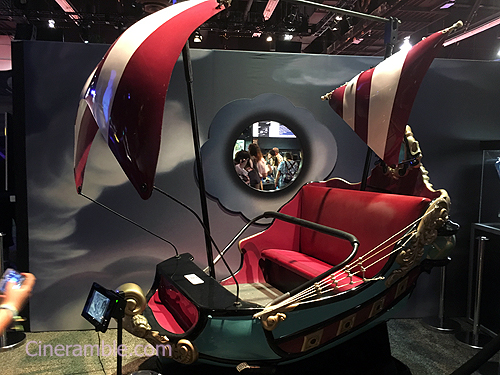


On one quarter of the gallery was the section devoted to the theme park attraction. I really found this area to be a treasure trove (so to speak), as many of the most interesting artifacts found here pertained to the development of the ride. Here you would’ve found early concept art, as well as models crafted to sculpt and build the then state of the art animatronic characters. One thing that really caught my eye was the original script written for the ride dialogue itself. The Archivists who set up the exhibit even turned the pages of the script to some of the more famous lines from the ride, like, “Another broadside and ye goes down with the tide,” or “Avast, ye scurvy scum.” The original sheet music was also exhibited in this same area. Of course, this section wouldn’t have been complete without parts of the actual ride itself. Among the ride artifacts, there was a prop cannon, unused models of one of the pig sty animatronics as well as the jailhouse dog, and most prominently, one of the pirate animatronics itself; one that’s clearly an older model no longer in use. This section in particular is probably what prompted the theme for the exhibit itself, as the attraction is celebrating it’s 50th anniversary this year. And while it mostly presents a sense of the attraction’s history, it also presents a look into it’s future, with pieces of the state of the art animatronics found here from the recently opened Shanghai Disneyland attraction, centered more closely with tie-ins from the films. And that segways into the remaining part of the exhibit.



The remainder of the exhibit focuses exclusively on the now five film series based on the ride. The Pirates of the Caribbean franchise’s extensive collection of props and costumes take up a huge footprint in this gallery, and front and center is an area devoted to the famed Black Pearl itself. Throughout the film section are scale models of the many ships featured in the film, but the largest by far is the Pearl herself. This massive model is the first thing you see upon entering the exhibit, and is given it’s own moody lighting, making it an especially great photo opportunity for all guests. Right next to the model are life sized props used on the real Black Pearl seen in the film, including the figure head and the steering wheel. Nearby, a section devoted to props found on the ship, The Flying Dutchman, are displayed. The Dutchman, being the ship captained by the villainous Davy Jones, is visualized through an infestation of barnacles and other sea based rot, so it’s really neat to see that detail put into all the props here. The largest single prop in this area also happens to be Davy Jones massive pipe organ, which itself immediately catches the eye right when you enter the gallery. Much of the remaining space is devoted to various character costumes. Of course, Jack Sparrow’s costume is given the extra special presentation, with it’s own shroud of misty fog being blown up from behind the base it’s sitting on. A couple other neat artifacts here, like the heart of Davy Jones, the map to the Fountain of Youth, and the costumes for the monkey Jack no doubt would excite die hard fans of the movies. I certainly found it to be a very interesting exhibit, again showcasing just how glorious the Disney Archive collection really is.

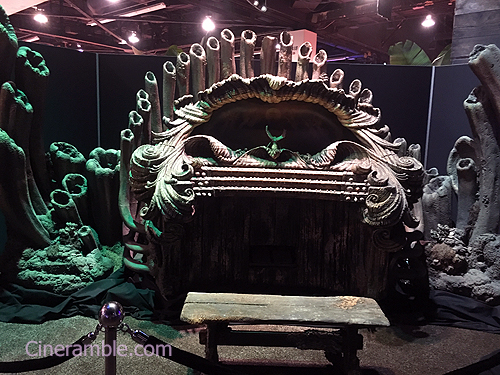

But, as popular as this exhibit was, it didn’t nearly create as much traffic over the long weekend as the Theme Parks booth did. This year, the Park booth was devoted solely to showing one single attraction to Expo guests. And it was a major attraction. Inside their booth was a massive scale model of Star Wars Land, currently under construction at both Disneyland and at the Disney Hollywood Studios in Orlando, Florida. As far as models go, this one was epic in scale. Approximately 20 ft. in length, spanning all the way across the booth, the massive model gives a very strong sense of the massive scale that is going into this amazing project. Several Disney Imagineers who are in charge of developing this project were on hand to tell us more about the project as everyone arrived to get a closer look. They described the setting of the land as a remote outpost within the Star Wars universe; original and unique to this land concept, but containing elements familiar to fans of the series. It will be home to two massive attractions, one of which allows guests to pilot the legendary Millennium Falcon spaceship. It was especially neat to look up close and get a sense of what the architecture and terrain of the of the land will look like once completed. Knowing that large crowds would be lining up just to see it, the booth was accommodated with a winding queue that was filled up for most of the Expo. As people waited, they were also treated to a demonstration of a droid character that rolled it’s way freely across the floor. Piloted remotely, this droid is likely going to be a street atmosphere element that will interact with guests in the land, and it was neat to see a preview of it there at the Expo. It certainly was a star attraction at this year’s Expo, and was probably very likely the most photographed element on the entire show floor.



THE PANELS
Of course, for an avid film fan like me, the real draw of this Expo is the exclusive first looks presented in the big Studio Presentations. Just like last the last Expo, the big shows were held in Hall D23, which is a sectioned off portion of the show floor big enough to seat 8,000 guests. Think of it as Disney’s Hall H, which is the famous big hall of San Diego Comic Con. Here, the major reveals were made in Disney’s upcoming slate of animated features, live action films, and theme park attractions. The first show in Hall D23, however, was dedicated to the induction of this year’s new Disney Legends. Acting as a lifetime achievement recognition. the Disney Legends has become the company’s way of honoring the best and brightest that have helped the company become what it is today. Among this year’s honorees were posthumous recipients like animation director Clyde Geronimi, comic strip artist Manuel Gonzales, film director Gary Marshall, and legendary Marvel comic artist Jack Kirby. Alongside them were honorees present to accept this honor; some of whom were also there at the Expo to promote upcoming projects. Among them were Oprah Winfrey, Imagineer Wayne Jackson,and theater director Julie Taymor. The highlights of this show however had to have gone to the legendary Stan Lee of Marvel Comics making an appearance at the show only one short week after losing his wife of almost 70 years, as well as actor Mark Hamill accepting the honor not just for himself, but for the late Carrie Fisher as well. While I would’ve greatly enjoyed being at this presentation, I unfortunately had to miss it in order to wait in line for the following show.
Thanks to my experience at the last Expo, I made sure to not waste a single opportunity to wait in line for the big shows. I managed to get in line early enough to have a decent enough seat in the first presentation on Friday afternoon. This one was devoted to Disney’s animation output, from both their home studio and Pixar Animation. Hosted by animation head John Lasseter, there became a running gag throughout the show that we were seeing things so early in the development process that there weren’t even final titles set for every film we were seeing. The show started with a reveal of another Cars spin-off, this time set in space, and then it proceeded into a showcase of the upcoming Frozen Christmas Special called Olaf’s Frozen Adventure. Actors Kristen Bell and Josh Gad were present to talk about the new short, and Josh even sang a live performance of a new song as well. There was also a mention of the upcoming Frozen 2, but nothing but a working title was shown. Next came a big segment devoted to the upcoming Wreck-It Ralph sequel called Ralph Breaks the Internet. Introduced by actress Sarah Silverman from the film, the presentation showcased an extended scene from the movie where her character Vanellope Von Schweetz and Ralph end up crashing the Disney website. What followed was a hilarious string of inside jokes aimed at the Disney company. It hit it’s high-point once Vanellope meets all the princesses in a spectacularly funny scene. Afterwards, John Lasseter revealed that all the princesses were being voiced by their original actors, and one by one all of them were invited on stage. It became a fantastic moment that was definitely the high-point of the show.

From there, the show went into it’s Pixar segment, with a first look at the upcoming Incredibles II, coming next year (a full 14 years after the first). Director Brad Bird came up on stage, and even indulged us with a little routine involving his character from the film, fashion designer Edna Mode. He discussed a little about what to expect with the new plot, and even showed us a little clip as well, centered on the baby of the family, Jack-Jack. Afterwards he invited the cast of the film out, which included Craig T. Nelson (Mr. Incredible), Holly Hunter (Elastigirl), Sarah Vowell (Violet), newcomer Huck Milner (Dash), and Samuel L. Jackson (Frozone). Afterwards, John Lasseter returned to the stage and delivered the somewhat shocking news that he was no longer going to be directing Toy Story 4, which comes out in 2019. He instead was handing directorial duties to first time director Josh Cooley, who was welcomed warmly on stage. He promised us that he was going to work hard to make his film live up to the previous ones. After that, there was an announcement of a new project in the works at Pixar; a yet untitled film about suburbia, only re-imagined through a fantasy angle. It was neat seeing early artwork for this project, which shows fantasy creatures like trolls, fairies and unicorns existing in a suburban environment. Following that, we were finally treated to an extended look at this fall’s upcoming Pixar film Coco (2017). Directors Lee Unkrich and Adrian Molina showed us two extended scenes which gave us a good sense of what to expect. Then, at the end, the voice of the film’s main character Manuel, young Anthony Gonzalez, started a performance of the film’s theme song titled, “Remember Me.” Following his impassioned performance, he was joined by actor Benjamin Bratt, who plays the mythical Ernesto de la Cruz in the film, and he too sang along. They were joined by a large grouping of Mexican dancers, who filled all the aisles up in the audience, immersing us in the experience. It was a fine closer to a solid show from Disney and Pixar Animation.



As much as this was a packed house show, it wasn’t the hardest one to get into. That was the one that followed in the next morning. I was extra prepared for this one and stayed overnight at the Convention Center; camping out in line. It proved to be worth it though as I managed to get a coveted seat for the Live Action Presentation. This was the one that discussed all of the upcoming live action films from Disney, Marvel, and Star Wars. First up was a presentation of the upcoming adaptation of the classic sci-fi novel, A Wrinkle in Time. We were shown the premiere of the first trailer for the film, and on stage we were graced to see director Ava DuVernay, as well as the stars Storm Reid, Chris Pine, Reese Witherspoon, Mindy Kailing, and new Disney Legend Oprah Winfrey. They talked about the movie and then revealed the new one-sheet poster, which we learned that we’d be getting a free copy of. Oprah took it a step further by parodying her famous audience gifting spiel, shouting, “you get a poster; you get a poster; everybody gets a poster!!” Afterwards, we were presented with a look at an upcoming film based on the Nutcracker story called Nutcracker and the Four Realms, starring Helen Mirren and Morgan Freeman in the ensemble. There were also announcements about upcoming remakes of Mulan and Aladdin, including the casting of Will Smith in the role of the Genie. Then, we watched a video from director Tim Burton discussing his upcoming re-imagining of Dumbo. This then led to a presentation of the upcoming sequel to a Disney classic, Mary Poppins Returns, starring Emily Blunt and Lin-Manuel Miranda. Director Rob Marshall and Emily Blunt were both there to premiere the first footage of the film, and to make the moment even more special, it was scored by a live orchestra, conducted by composer Marc Shaiman. Disney’s segment of the show concluded with a first look at the upcoming Lion King remake, and it looked spectacular. Director Jon Favreau came on stage afterwards and thank us all for the support of this project, and hoped that it would be a satisfying appetizer for what’s to come.


Next up was Star Wars, with a particular emphasis on the upcoming continuation in the saga, Episode VIII: The Last Jedi. There was little mention of the already troubled Han Solo stand-alone film, and it was passed through with only an overlook of the cast. Then writer and director Rian Johnson came on stage to introduce the cast of the film, which included Daisy Ridley (Rey), John Boyega (Finn), Gwendoline Christie (Captain Phasma), as well as newcomers Kelly Marie Tran (Rose Tico), Laura Dern (Amilyn Holdo) and Benicio Del Toro (DJ). They all shared their excitement for the film, and what they all love about Star Wars in general. But, of course, the real highlight came when Luke Skywalker himself, Mark Hamill, came on stage. He expressed his excitement for the project and his joy of working with Rian Johnson on the project. After that, a new behind the scenes montage was presented, which offered a neat look at some things to expect in the new film. It was especially touching to see any glimpse of the sorely missed Carrie Fisher. Afterwards, it was Marvel’s turn to close out the show. Surprisingly, no mention at all about the upcoming Thor: Ragnarok or Black Panther. This was entirely devoted to the highly anticipated Avengers: Infinity War. Marvel Studios head Kevin Feige was there to acknowledge that this was the studio’s 10th anniversary, and then he welcomed onto stage the voice of the Infinity War’s main villain Thanos, Josh Brolin. Brolin briefly talked about his excitement for the film, and then was joined by nearly half the cast of the movie. Instead of naming them all by actor, I’ll just quickly say which characters were there to challenge Thanos: Vision, Scarlet Witch, War Machine, Mantis, Winter Soldier, Drax, Falcon, Nebula, Doctor Strange, Black Panther, Hulk, Thor, Spider-Man, and of course the one who started it all, Iron Man. That amazing line-up would’ve been a highlight enough, but after a 10 year montage, we were blessed with our first glimpse of the movie itself. I can tell you that I was on the edge of my seat watching the full wrath of Thanos and the Infinity Gauntlet in this brief first look. This alone made the overnight wait totally worth it.
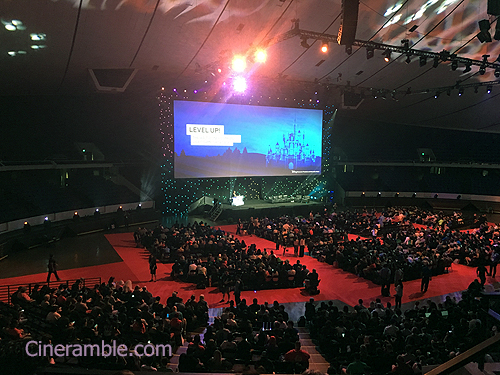


Following this show, I managed to get more easily into the Theme Park showing. There were some more interesting details revealed about the upcoming Star Wars Land, including the official name: Star Wars Galaxy’s Edge. After that, more announcements about a new Mickey Mouse ride in Disney World, a Guardians of the Galaxy ride in Epcot, and a Star Wars themed Resort in Orlando rounded out a very busy conference. One benefit for this year’s D23 Expo was the availability of the Anaheim Convention Center’s arena showroom. The domed structure was unavailable at the last Expo due to renovation and expansion, but this year it was reopened, helping to free up some much needed space. Dubbed the D23 Expo Arena, this room played host to some of the mid-level conferences; ones that are too popular for the showrooms upstairs, but not big enough to fill the Hall D23. My first show in there was for a little history presentation called Melodies in Walt’s Time, hosted by Whoopi Goldberg and Leonard Maltin. It was part lecture, part concert, as a live band and choir was there to perform as well. Following the Live Action show in Hall D23, I made my way into the Level Up panel in the Arena, which focused on Disney’s upcoming video game slate. Sadly this was a downgrade after the dissolving of Disney Interactive in the last year, which included the cancellation of Disney Infinity, which was a game I was particularly invested in. Most of the talk centered on the upcoming Kingdom Hearts 3 and Star Wars Battlefront II. Battlefront even included a special guest appearance from actor John Boyega from the film franchise, who himself is a fan of the games. Kingdom Hearts 3 showcased a reveal of a Toy Story themed level, which got a huge reaction from the crowd I was a part of; as did the announcement of a 2018 release.



The final day of the Expo had me focusing mostly on walking the floor and taking in all the experiences that I had missed in the first two days, but I did fit in one panel, and that was a celebration of the 20th anniversary of the film Hercules. I’m not a particular fan of the movie, but was nevertheless fascinated in the behind the scenes stories behind it. Hosted by the film’s directors, Ron Clements and John Musker, they walked us through a full history of the movie, from inception to development to animation. They were accompanied by animators Ken Duncan (who drew the female lead Megara) and Eric Goldberg (who animated the character Phil). Throughout the show, they presented some interesting behind the scenes footage, including rough animation, live action reference, and some early tests of the amazing CGI animated Hydra in the film. There was also a brief video made by the film’s designer, artist Gerald Scarfe, who unfortunately couldn’t attend but still wanted to share his thoughts. Afterwards, actors Tate Donovan and Susan Egan, who played Hercules and Megara respectively, were welcomed out. They shared some of their anecdotes about working on the film, and we were also shown a recording session video of actor James Woods, who played the villain Hades. To finish the show, actress Susan Egan blessed us with a live performance of the love song “I Won’t Say,” which brought the show to a nice strong finish.

So, as you can see, the majority of my experience at this Expo was devoted to experiencing these exclusive panels. It can take away some precious walking around time, but if what is shown is worth the long wait, then it absolutely is worth it in the end. I certainly am happy that I got into both of the biggest shows at the Expo, so it’s worth missing out on the other things. Still, there were a couple of panels that I wish that I hadn’t missed, like one discussing the Duck Tales reboot, as well as one celebrating The Lion King. Also, it would’ve been nice to have had the time to catch the Legends ceremony early in the morning. But, as I have learned from previous Expos, you can’t fit it all in; not even with 3 full days. There’s just too much to do, and so little time to do it, so you have to pick and choose in the end. I’m sure any convention is filled with these kinds of decisions; especially the biggest and most exclusive ones. Overall, I was very pleased with how these panels worked out in the end, and the fact that I didn’t miss out on the most important ones of all.


THE ATMOSPHERE
Lastly, I want to talk about the feeling of being there in the show room floor and among all the other guests at the Expo. From the moment you set foot through the front doors, you immediately feel this warmth of a great, loving community coming together. All throughout the three days of the D23 Expo I had more conversations with complete strangers than any other part of the year combined, and it was all geared around a shared love for the same thing. No matter where I was, I could converse with anyone else in line and share the same enthusiasm for what we’ve just seen or were about to see. I also got to have some interesting conversations with people who work for the Disney company as well. I got to speak with an Imagineer at the Star Wars Land model, and he shared his unique life experience which had him start off his career by answering a help wanted ad in the Los Angeles Times which many years later led him to working on this massive Star Wars expansion in Disneyland. Apart from conversations with fellow Disney, Marvel, and Star Wars fans, it was also just neat to see the varying kinds of cosplay that people came to the Expo with. Some of them were especially intricate, showing just how serious some fans are when it comes to showing their appreciation for this stuff. I also enjoyed the many opportunities to collect plenty of free swag; the best of which was a talking Star Lord action figure. And more than everything, it was just a warm inviting experience. Despite crowding issues in some places, all around you would be beautiful sights and sounds everywhere. I especially loved how they even worked in special parades throughout the day on the show floor, which included a marching band, giant balloons, and carriages carrying special celebrity guests. Also, Center Stage played host to acts that never required a line or pass to enjoy. Overall, it was another great show put on by the Disney Company. My hope is that they clear their own high bar next time around, as this thing gets bigger with every passing year. The next one is in 2019, and my hope is to be at that one as well, covering it for all of you just as I have before. Until then, I’ll be Wishing Upon a Star for a another great Expo in two years, and I’ll feel forever grateful to have been a part of this one too.

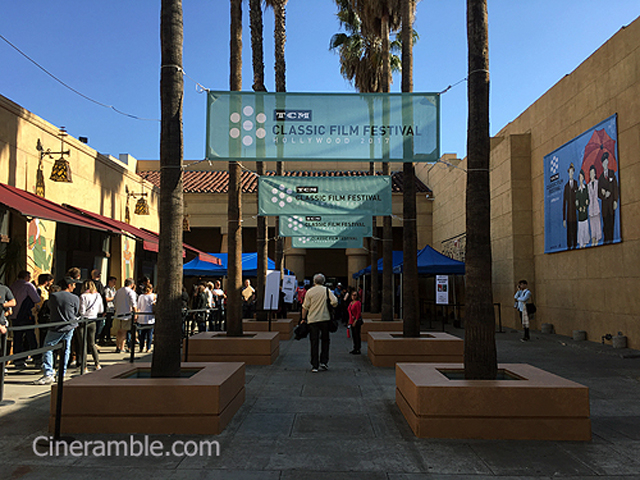




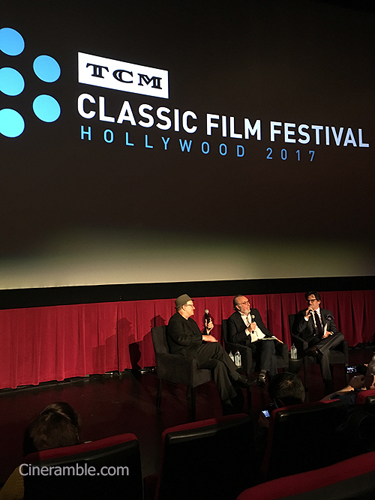

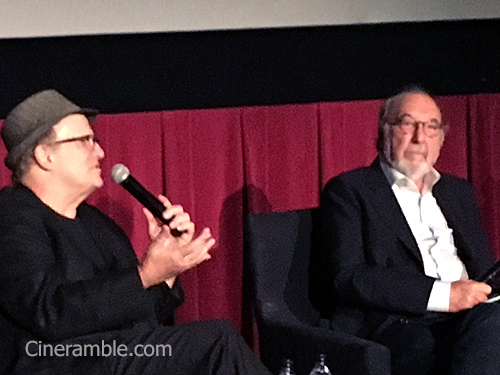

























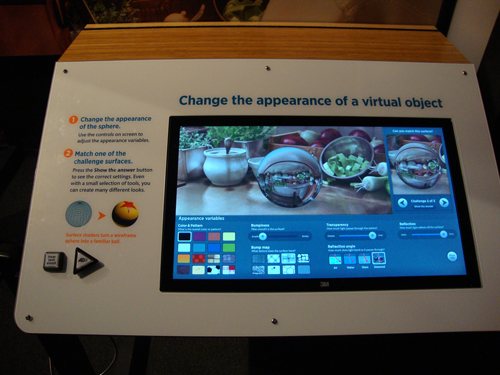


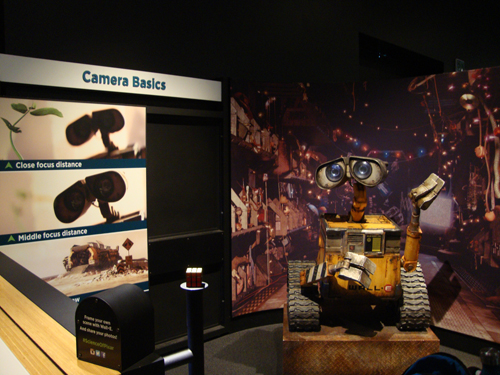







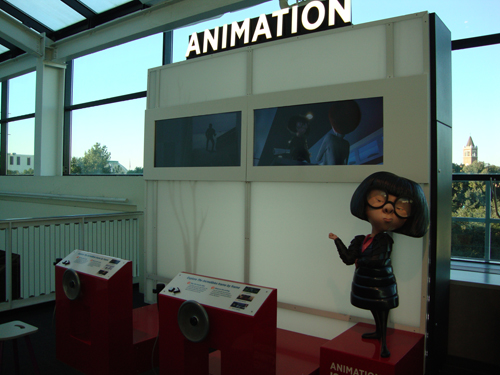










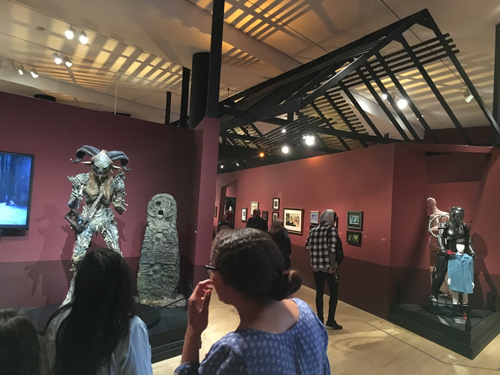





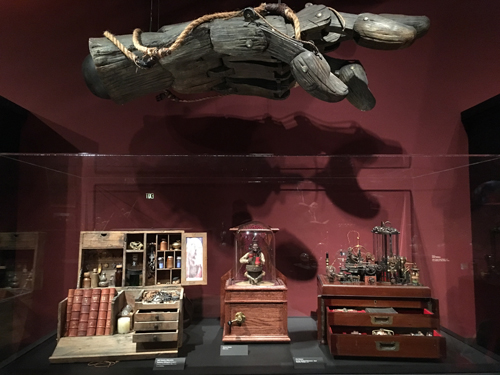



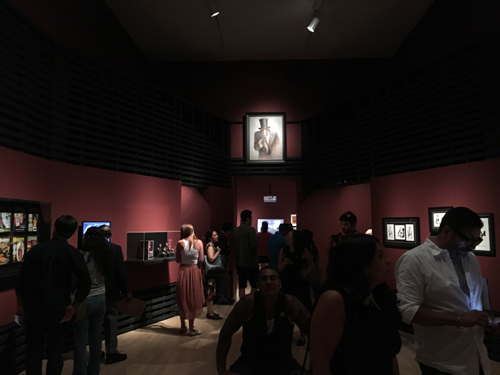






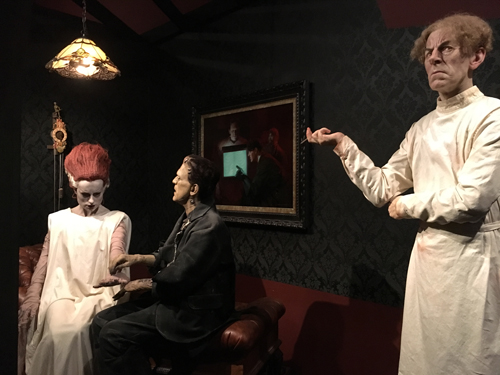
















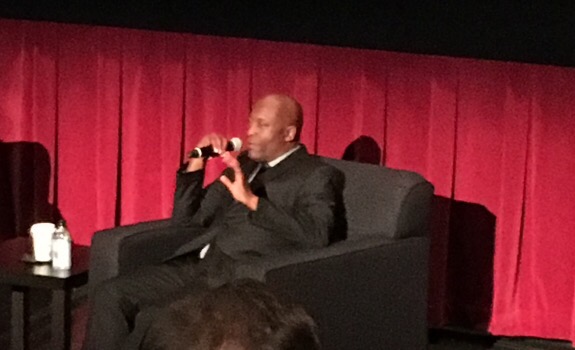
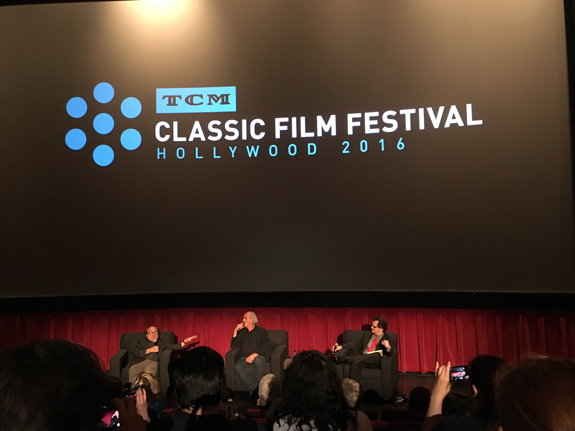
 The interview gave us a interesting look into the making of the movie, especially with regards to director Milos Forman’s sometimes unusual tactics. They mentioned that the hospital was a real working one that had authentic mental patients that Forman strongly encouraged his actors his actors to interact with, in order for them to gain more insight into the conditions that their characters are dealing with. The two of them also talked about their experience of working with Jack Nicholson, which could sometimes be an adventure in itself. Naturally, DeVito did most of the talking during the interview. Lloyd maybe said no more than five words total during the interview. Not that it was a bad thing; showing up in the first place was more than enough for him to do to make this showing worthwhile, in addition to Danny DeVito being there. This was a nice highlight for this festival, and one that the festival runners managed to make happen at the last minute; the interview portion wasn’t listed on the programs, and the only way people could know about it is if they followed the festival on social media. Thankfully, I managed to learn about it and work it into my festival schedule. It’s a treat when you can hear about the film from the actor’s perspective, and here we got two from some genuine legends.
The interview gave us a interesting look into the making of the movie, especially with regards to director Milos Forman’s sometimes unusual tactics. They mentioned that the hospital was a real working one that had authentic mental patients that Forman strongly encouraged his actors his actors to interact with, in order for them to gain more insight into the conditions that their characters are dealing with. The two of them also talked about their experience of working with Jack Nicholson, which could sometimes be an adventure in itself. Naturally, DeVito did most of the talking during the interview. Lloyd maybe said no more than five words total during the interview. Not that it was a bad thing; showing up in the first place was more than enough for him to do to make this showing worthwhile, in addition to Danny DeVito being there. This was a nice highlight for this festival, and one that the festival runners managed to make happen at the last minute; the interview portion wasn’t listed on the programs, and the only way people could know about it is if they followed the festival on social media. Thankfully, I managed to learn about it and work it into my festival schedule. It’s a treat when you can hear about the film from the actor’s perspective, and here we got two from some genuine legends.






